What does the Bishop do with their time?
One way to explore the role of the Bishop, is to reflect on what the Bishop does with their time. People experience the Bishop:
- when the Bishop visits their parish, about every 2 years
- when they are confirmed
- when they attend an ordination
- when they attend the funeral of a priest or deacon that the Bishop conducts
- when they participate in a Deanery teaching day in which the Bishop gives a talk
- through the written word communicated in:
- Diocese of Algoma – Latest News sent by email and posted on www.dioceseofalgoma.com,
- posts on Facebook,
- pastoral letters to the diocese, and
- Ad Clerum to clergy
- as a member of Diocesan Synod
- as a member of Diocesan Executive Committee
- when they attend a Diocesan Lay Reader conference
- whey they attend a Diocesan ACW Annual meeting
- when they attend a Diocesan Clergy retreat
- through ecumenical events that the Bishop participates in, such as the Week of Prayer for Christian Unity and the World Day of Prayer
- when their parish is filling the vacancy of the Incumbent
- through ministry reviews with church wardens and the incumbent
- when their parish has a conflict with the Synod Office, or when their parish has an internal conflict, and the Bishop intervenes.
As one reflects these experiences, one can identify these roles:
- leadership and management of the Diocese – oversight – care for parishes
- teaching
- missional leadership
- raising up vocations to the diaconate and priesthood (ordination)
- provision of sacraments: confirmation
Many things the Bishop does, are not apparent to the average Anglican, particularly when the Bishop’s work involves travel outside of the Diocese.
The Bishop maintains a practise of prayer and study. If a Bishop is to be a good teacher/preacher, time for lifelong learning and retreat is essential to every bishop’s life and ministry.
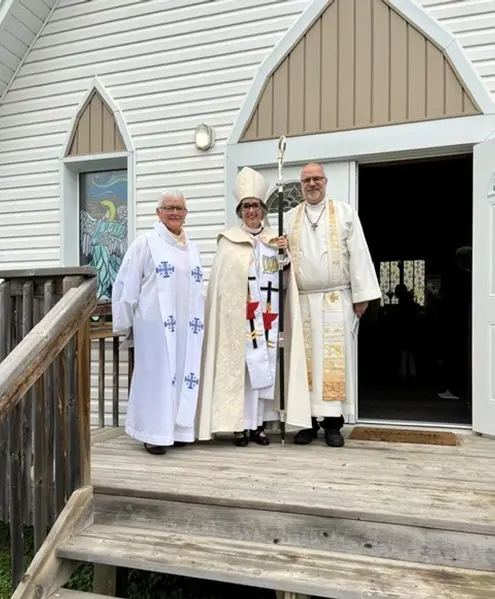
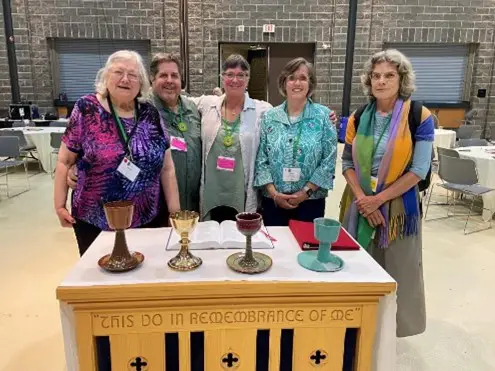

The Bishop works in the Ecclesiastical Province:
- attending the Provincial House of Bishops
- attending Provincial Synod, held once every three years
- attending Provincial Council, which meets in the spring and in the fall
- serving on a Provincial committee(s)
- participating in consecrations of bishops within the Province
The Bishop works in the National Church and Anglican Communion:
- attending the National House of Bishops, which meets in the spring and fall – one week each
- attending General Synod, held once every three years
- serving on General Synod Council or committee(s)
- participating in a ministry of the Anglican Church of Canada or in the Communion
- attending the Bishops of the Communion Conference (Lambeth Conference), held once every ten years at Lambeth Palace in Canterbury, England
With respect to participating in a ministry of the Anglican Church or in the Communion, +Linda was a member of ARCIC (Anglican Roman Catholic International Commission); +Andrew was in England attending Compass Rose. For six years +Anne was on the board of the Anglican Foundation of Canada. All these ministries provide a vital link between the bishop and other organizations as the bishop offers their gifts of ministry.
The Archbishop of Canterbury first convened the Lambeth Conference in 1865 at the request of the Canadian House of Bishops.
As one reflects on the time the Bishop spends outside the Diocese, one can see that the Bishop connects Algoma with the wider church and the wider church with Algoma. In doing so, the Bishop is an instrument of unity.
From the Ordinal
Another way to explore the role of the Bishop, is to reflect on the liturgy of the Ordination of a Bishop and see what the church intends the Bishop to be. From The Ordination of a Bishop, the Examination,
N, the people have chosen you and have affirmed their trust in you by acclaiming your election. A bishop in God’s holy Church is called to be one with the apostles in proclaiming Christ’s resurrection and interpreting the Gospel, and to testify to Christ’s sovereignty as Lord of lords and King of kings.
You are called to guard the faith, unity, and discipline of the Church; to celebrate and to provide for the administration of the sacraments of the new covenant; to ordain priests and deacons, and to join in ordaining bishops; and to be in all things a faithful pastor and wholesome example for the entire flock of Christ.
With your fellow bishops you will share in the leadership of the Church throughout the world. Your heritage is the faith of patriarchs, prophets, apostles, and martyrs, and those of every generation who have looked to God in hope. Your joy will be to follow him who came not to be served but to serve, and to give his life a ransom for many. BAS p. 636
Guard the faith, unity, and discipline of the Church
Continuity – Successor of the Apostles
Bishops continue the work of the apostles in three ways:
- upholding, expounding and promoting the apostolic faith;
- leading the faithful in the apostolic mission of the gospel in the midst of the world; and
- being a visible link through history, by continuous succession, with the Church of the apostles. Becoming a Bishop p. 24
Teacher and Defender of the Faith
Bishops teach:
- through their own teaching/preaching
- by raising up others to teach
- by ensuring opportunities for teaching to occur such as the Diocesan Clergy Retreat and Diocesan Synod
A missional aspect of defending the faith is when teaching becomes apologetic, i.e. explaining Christianity to the wider society.
As the Defender of Faith, the Bishop monitors the situation in the church and responds appropriately. The Bishop may correct inappropriate teaching. When clergy and lay people appointed to positions in the Diocese, are teaching inappropriately, the Bishop may exercise discipline with them. The General Synod Canon on Discipline lists teaching or advocating doctrine contrary to those accepted by the Anglican Church of Canada (ACC) as an offense.
Discipline – General Synod Canon XVIII
The Bishop has power of discipline over the bishops, priests, deacons and lay people appointed to positions in the diocese and in parishes in the diocese.
Ecclesiastical offences include conviction of an indictable offence, immorality, disobedience to the bishop, neglect of duties, violation of the constitution and canons, and teaching or advocating doctrine contrary to those accepted by the ACC.
The Bishop may determine whether an ecclesiastical offense has been committed and the penalty for the commission of the offense or the Bishop may refer the determination of both the offence and the penalty to the diocesan court.
The diocesan court may also be requested to review the finding that an ecclesiastical offence has been committed and/or the penalty imposed.
For the full text click on Canon XVIII Discipline.
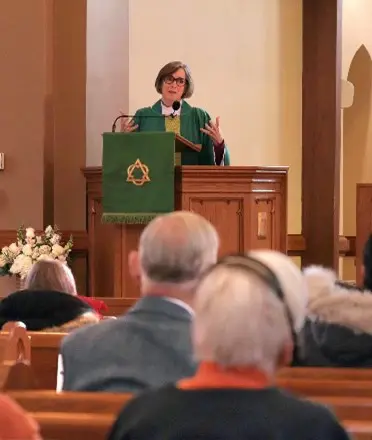

Provide for the administration of the sacraments of the new covenant
The Bishop licences Incumbents, normally priests (presbyters), to spiritual and pastoral care for a parish. When there is no Incumbent, the Bishop ensures that clergy or Diocesan Lay Readers provide spiritual and pastoral care and administer the sacraments.
The Bishop continues as a priest and may provide spiritual and pastoral care for a parish.
Ordain priests and deacons, and to join in ordaining bishops
Raising Up Vocations
The Bishop will work with incumbents, archdeacons, pastoral chaplains, and theological colleges to mentor and select candidates for ordination (postulants). A priest or bishop is appointed as a pastoral chaplain for each deanery, to assist in talking with those discerning a call to ministry. As a final step in the process, the Bishop meets with the Diocesan Postulancy Commission to decide on whether to ordain people.
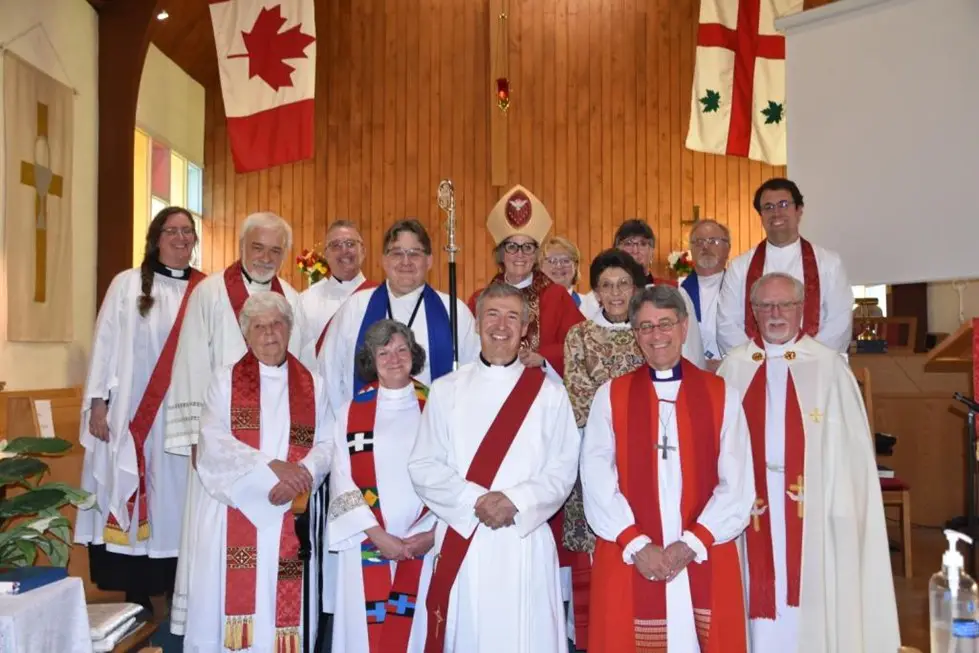

Be in all things a faithful pastor and wholesome example for the entire flock of Christ
Care for Congregations
The Bishop licenses Incumbents, normally priests (presbyters), to provide spiritual and pastoral care for a parish. Archdeacons are appointed to assist the Bishop in the oversight of parishes, and Territorial Archdeacons represent the Bishop in their deanery.
The Bishop is responsible for ensuring internal conflicts and issues between the Incumbent and parish are resolved, if they are not able to resolve it themselves.
The Bishop may exercise a discipline function with clergy and lay people appointed to positions in the Diocese.
With your fellow bishops you will share in the leadership of the Church throughout the world
Continuity – Instrument of Unity
As chief pastor, the Bishop links one parish to another, representing the diocese to the wider church and the wider church to the diocese. Bishops often are on the forefront of local, national, and global issues, speaking the word of faith to the needs of the world. Bishops are one vital and visible way of showing the Anglican Church is a continuation of the original Apostolic church. Bishops provide leadership for ecumenical dialogues.
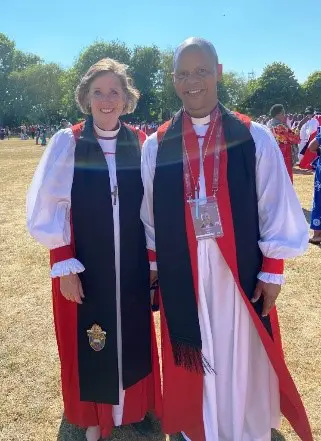
Episcopally-led, Synodically-governed
To oversee the Diocese, the Bishop listens to the clergy and people, develops courses of action with them, and with them, discerns Jesus’ and the Holy Spirit’s leading. In the oversight of the diocese the Bishop is guided by scripture, the tradition of the church, and reason.
The Diocese being led by the Bishop but governed by a synod is an Anglican feature; see Episcopal Origins: The Church of England in Canada for a discussion of how this happened.
Synod is comprised of three houses, Bishop, clergy, and people, and for decisions to pass each house must agree. In the case of Algoma’s Diocesan Synod, the House of Bishop has one member, and it operates when concurrence is given or withheld at the closing of Synod. Synod is a legislature, passing canons (laws) and motions that become policy or direction for the Executive Committee, deaneries, and parishes. In Algoma, Diocesan Synod meets every 2 years.
In the clergy and people, there are tremendous gifts and resources, including financial resources, and the Bishop provides leadership so that these gifts may be harnessed to do God’s work.
To Conclude
The Bishop is a servant of Jesus Christ, who is the head of the church, and the Bishop is to embody the church and be its example.
Christ has no body now on earth but yours,
no hands but yours, no feet but yours;
yours are the eyes through which
Christ’s compassion looks out on the world,
yours are the feet with which He is to go about doing good and
yours are the hands with which He is to bless us now.
Saint Teresa of Avila
Resource
- Becoming a Bishop: A Theological Handbook of Episcopal Ministry – Paul Avis


